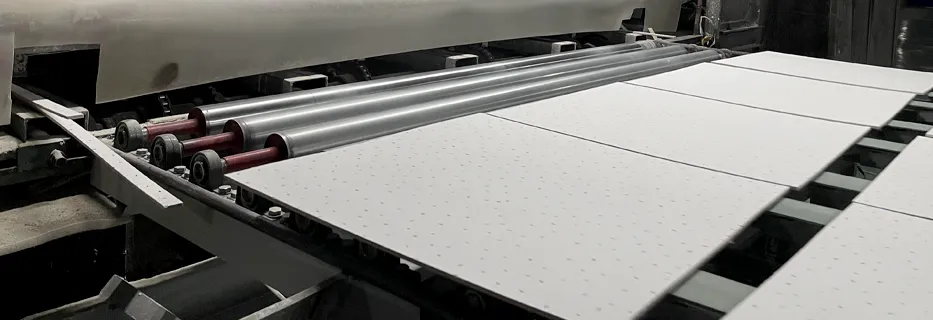- Afrikaans
- Albanian
- Amharic
- Arabic
- Armenian
- Azerbaijani
- Basque
- Belarusian
- Bengali
- Bosnian
- Bulgarian
- Catalan
- Cebuano
- Corsican
- Croatian
- Czech
- Danish
- Dutch
- English
- Esperanto
- Estonian
- French
- German
- Greek
- Hindi
- Indonesian
- irish
- Italian
- Japanese
- Korean
- Lao
- Malay
- Myanmar
- Norwegian
- Norwegian
- Polish
- Portuguese
- Romanian
- Russian
- Serbian
- Spanish
- Swedish
- Thai
- Turkish
- Ukrainian
- Uzbek
- Vietnamese
নভে. . 26, 2024 00:17 Back to list
Fire Resistant Ceiling Access Panels with 2-Hour Rating for Enhanced Safety and Security
Understanding 2-Hour Fire Rated Ceiling Access Panels
In the realm of construction and building safety, fire-rated materials play an indispensable role in protecting lives and property. One specific component of this safety framework is the 2-hour fire rated ceiling access panel. These panels are essential in ensuring that critical areas of a building remain accessible while concurrently providing a barrier against the spread of fire.
What are Fire Rated Ceiling Access Panels?
Fire rated ceiling access panels are specialized openings installed within ceilings to allow entry to various systems, such as ducts, pipes, and electrical wiring. When we label these panels as 2-hour fire rated, we indicate that they have been tested and certified to withstand exposure to fire for up to two hours without allowing flames or significant heat to pass through. This rating is crucial for maintaining the integrity of fire-resistance-rated assemblies in commercial and residential buildings.
Importance of 2-Hour Fire Ratings
A 2-hour fire rating is an industry standard that provides a significant level of protection. In the event of a fire, these panels help to compartmentalize the fire, slowing its spread throughout the building. This additional time can be critical for the evacuation of occupants and for emergency response teams to manage the situation effectively. buildings with a comprehensive fire safety design can considerably lower the risk of damage and loss of life during a fire incident.
Applications of 2-Hour Fire Rated Ceiling Access Panels
The applications for these ceiling access panels are varied and crucial in several contexts
1. Commercial Buildings Offices, retail spaces, and warehouses often utilize 2-hour fire rated panels to maintain compliance with fire safety regulations. These panels ensure that maintenance personnel can access necessary infrastructure without compromising fire safety.
2 hour fire rated ceiling access panels

2. Educational Institutions Schools and universities frequently require access to ceilings for repairs and maintenance. Fire rated access panels ensure that these facilities remain safe for students and staff while allowing maintenance access.
3. Healthcare Facilities Hospitals and clinics often have complex systems installed in ceilings, including ventilation and electrical components. The use of fire rated panels protects vulnerable areas of these buildings against fire hazards.
4. Industrial Settings Manufacturing plants and industrial sites utilize these panels to permit safe access to overhead equipment while meeting stringent fire safety standards.
Installation and Compliance
The installation of 2-hour fire rated ceiling access panels must adhere to specific codes and standards established by local fire safety authorities and building codes. This includes proper installation techniques, ensuring the panels fit seamlessly within fire-rated walls and ceilings, and using appropriate fire-sealants and insulation materials.
Verification of compliance is vital; thus, many manufacturers provide documentation certifying that their products meet the necessary fire-resistance ratings. It's also essential for building owners and contractors to work closely with certified professionals to ensure that all fire safety measures are not only in place but maintained properly over time.
Conclusion
The necessity for fire rated access panels in modern buildings cannot be overstated. Specifically, 2-hour fire rated ceiling access panels serve as a crucial link between safety and accessibility. By enabling necessary maintenance access while providing a robust fire barrier, these panels are a prime example of how safety and functionality can work together effectively.
Choosing the right fire rated access panel for a project involves careful consideration of the specific fire ratings, materials, and installation requirements. Ultimately, investing in high-quality, compliant fire rated ceiling access panels can contribute significantly to the overall fire safety strategy of any building, ensuring a safer environment for all occupants. As construction practices continue to evolve, the integration of such safety features will remain integral to safeguarding lives and property.
-
Transform Interiors with PVC Gypsum Ceiling: A Stylish, Durable, and Moisture-Resistant SolutionNewsMay.19,2025
-
The Smart Interior Upgrade: Discover the Durability and Versatility of Gypsum Ceiling Access Panel SolutionsNewsMay.19,2025
-
The Smart Choice for Interior Design: Discover the Value of PVC Gypsum Ceiling SolutionsNewsMay.19,2025
-
Mineral Fiber Ceiling Tiles: The Smart Blend of Performance and AestheticsNewsMay.19,2025
-
Mineral Fiber Ceiling Tiles: The Superior Choice Over Gypsum for Sound and Fire SafetyNewsMay.19,2025
-
Mineral Fiber Ceiling Tiles: Eco-Friendly Strength and Style for Every CeilingNewsMay.19,2025







